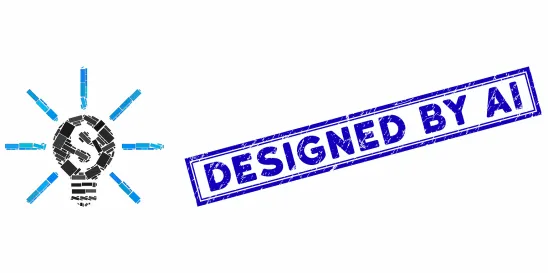The US Patent and Trademark Office (USPTO) recently released its Inventorship Guidance for AI-Assisted Inventions, providing inventors and patent applicants with a framework regarding artificial intelligence-assisted inventions and how such will be judged at the USPTO. 89 Fed. Reg. 10043 (Feb. 13, 2024). The guidance—a needed clarifying guidepost along the AI road—is effective immediately.
This guidance is key, particularly given the 2022 Federal Circuit holding that “only a natural person can be an inventor, so AI cannot be.” Thaler v. Vidal, 43 F.4th 1207, 1213 (Fed. Cir. 2022), cert denied, 143 S. Ct. 1783 (2023). After that opinion, patent applicants were left in limbo as to how AI might affect or be integrated into the invention process.
The Human Inventorship Requirement Remains
The first, and perhaps most critical, takeaway from the new guidance is that the human inventorship requirement remains unchanged. Inventions created entirely by AI are still unpatentable.
However, the guidance allows for the patenting of inventions created jointly between man and machine, provided the human(s) “significantly contributed to the invention.” 89 Fed. Reg. at 10046. That is, the person has to do more than merely rely upon an AI system to come up with an invention.
This does not alter the law that only humans, or “natural persons” as referred to in the Patent Act, may be named inventors on patent applications. In short, inventions created jointly between at least one natural person and AI may be patented, but only the natural person(s) may be named as inventor(s) on the patent application submitted to the USPTO, and any subsequent patent that issues.
What Is a Significant Contribution?
This standard for inventorship is not new, but does raise the question: what qualifies as a “significant contribution” to an invention in the context of an AI-assisted invention?
The significant contribution analysis relies on the Pannu factors. Pannu v. Iolab Corp., 155 F.3d 1344 (Fed. Cir. 1998). These factors are: (i) contributing “in some significant manner to the conception or reduction to practice of the invention,” (ii) making “a contribution to the claimed invention that is not insignificant in quality, when that contribution is measured against the dimension of the full invention,” and (iii) doing “more than merely explain to the real inventors well-known concepts and/or the current state of the art[.]” Id. at 1351. The factors, as one would expect, are not couched in absolutes, so the USPTO must decide where to draw the line on the significance of the conception and contributions within the context of the full invention. This is bound to be a rocky road given the potential complexities and different scenarios involved, given the leeway for assessing contribution to an invention. As a helpful start though, the USPTO issued two examples with the guidance, one called “Transaxle for Remote Control Car” and one called “Developing a Therapeutic Compound for Treating Cancer.” See Fed. Reg. at 10045. Each example presents several scenarios with detailed analysis regarding determination of inventorship using the guidance and applying the Pannu factors.
No Bright-Line Test for Significance
The USPTO recognizes that determining whether a contribution is significant could be difficult, and notes that—like in many areas of the law—there is not a bright-line test. However, it does provide a list of “guiding principles” to help aid the determination:
- A natural person’s use of an AI system in creating an AI-assisted invention does not negate the person’s contributions as an inventor.
- A natural person’s mere recognition of a problem or having a general goal or research plan to pursue does not rise to the level of conception. However, a significant contribution could be shown by the way the person constructs the prompt in view of a specific problem to elicit a particular solution from the AI system.
- A natural person’s mere recognition and appreciation of the output of an AI system as an invention and subsequent reduction to practice alone is not a significant contribution that rises to the level of inventorship.
- A natural person who develops an essential building block from which the claimed invention is derived may be considered to have provided a significant contribution to the conception of the claimed invention even though the person was not present for or a participant in each activity that led to the conception of the claimed invention.
- Maintaining ‘intellectual domination’ over an AI system does not, on its own, make a person an inventor of any inventions created through the use of the AI system.
89 Fed. Reg. at 10048-49. The aforementioned two examples included with the guidance serve to illustrate application of these principles.
A Contribution to Every Claim
The guidance makes clear that a human must significantly contribute to each claim in the patent application. Essentially, a human may not invent a single independent claim and then allow the AI to take over.
For example, we can imagine a scenario in which the AI develops refinements that lead to multiple other claims stemming from the one independent claim. The human may not file a patent application on those other claims naming itself as an inventor of those AI-created claims. The assessment for inventive contribution applies to all claims.
What is less clear is how the interaction between dependent and independent claims will be viewed, where the independent claim originated from a human, but the dependent claims that offer further specificity were developed by AI.
As With Copyright Law, AI May Be Used as a Tool for Patents
The guidance signals that AI may be used as a tool to aid—but not replace—human contribution in patents. This is consistent with the authorship requirement of copyright law. Indeed, a direct parallel exists, where the copyright term “author” is interpreted to mean “human author,” as seen in the now-infamous “monkey selfie” case, which held that a monkey could not own the copyright in a photograph it took. Naruto v. Slater, et al., 888 F.3d 418 (9th Cir. 2018).
Next, the guidance is consistent with positions of the courts and US Copyright Office, which have determined that the mere presence of AI in the creation of a work does not doom a copyright application, but any material created by AI must be disclaimed by the human author. For example, in Thaler v. Perlmutter, a district court upheld the Copyright Office’s outright rejection of an application to register a work that the human applicant declared was entirely created by artificial intelligence, through what he dubbed his “creativity machine.” Thaler v. Perlmutter, et al., No. 22-1564 (BAH), 2023 WL 5333236 (D. D.C., Aug. 18, 2023). For Zarya of the Dawn, a graphic novel with human-authored text and AI-created illustrations, the Copyright Office granted a limited copyright registration, deeming the work as a whole and the text of the work protectable, while treating the AI-generated images, outside the context of the whole work, as unprotectable. (Essentially, the Copyright Office treated the AI contributions the same as other unprotectable works, like those that have fallen into the public domain, for which derivative works can receive copyright protection, but only for the new elements that the more recent author added.) For Théâtre D’opéra Spatial, a visual work in which a base image was created using generative AI after hundreds of successive prompts, with noticeable enhancements made by a human author, the Copyright Office denied registration, but noted that it may have approved a limited registration if the AI-created underlying base image was disclaimed.
Future Challenges and Takeaways
While the guidance only just issued, and clearly will face challenges and questions with future application, this was a crucial step from the USPTO to clarify this evolving technological area.
The key takeaway for patent applicants is that humans remain central to the inventorship of patentable ideas. If AI is used in the invention process, the human role in that process must be carefully evaluated to ensure that inventorship is proper (i.e., using the Pannu factors as a guide).
While the USPTO may not catch, or even challenge, inventorship during the patent process, subsequent litigation may expose any flaws. Accordingly, documentation of each step in the patenting process is fundamentally important. While such documentation, typically referred to as lab or inventor notebooks, has always been vital during patent litigation when challenges to inventorship, conception, and reduction to practice are at issue, proper documentation now has another added requirement: to ensure that the record is clear on the role of the human in an AI-assisted process.





 />i
/>i

